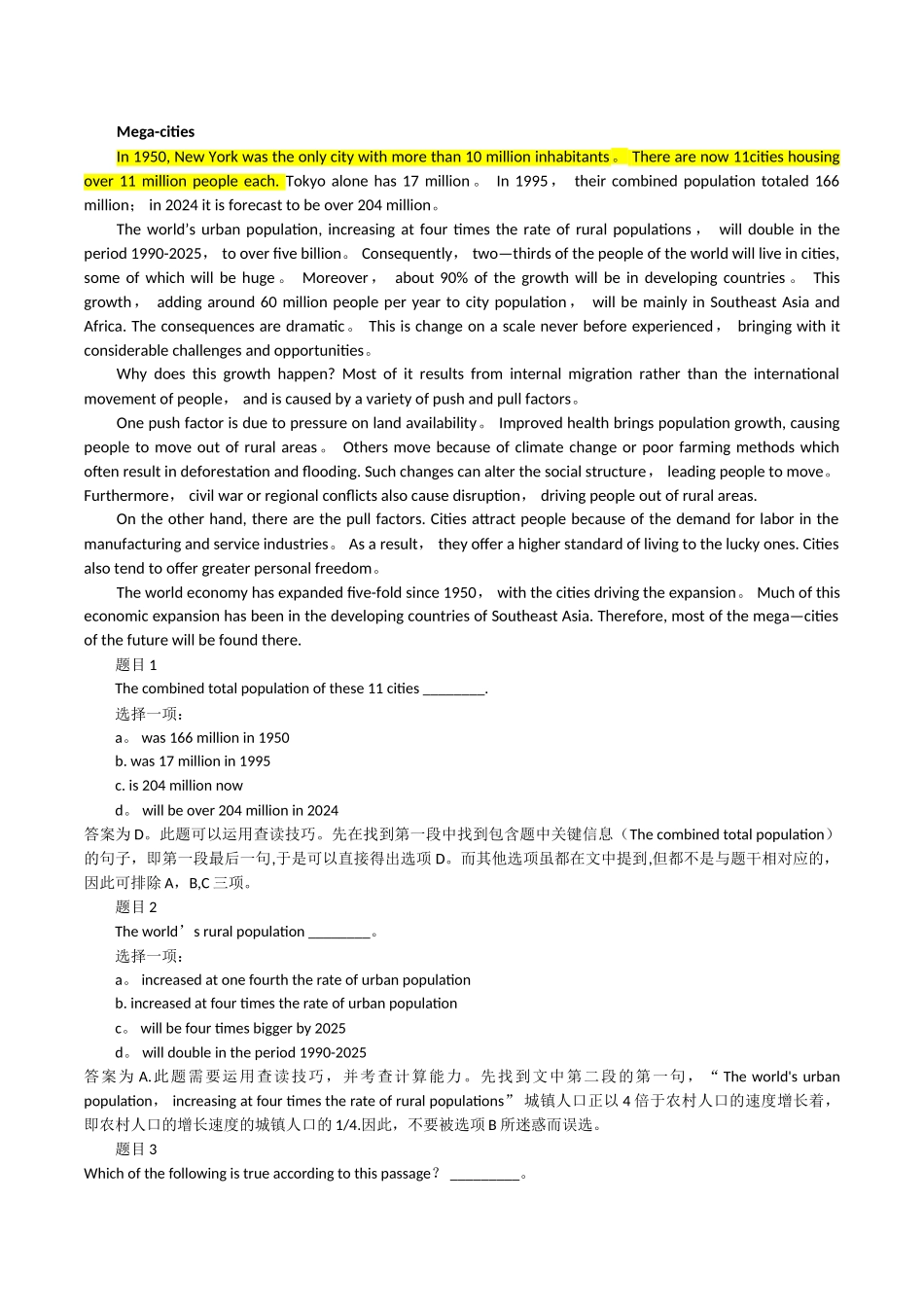Mega-citiesIn 1950, New York was the only city with more than 10 million inhabitants。 There are now 11cities housing over 11 million people each. Tokyo alone has 17 million 。 In 1995, their combined population totaled 166 million; in 2024 it is forecast to be over 204 million。The world’s urban population, increasing at four times the rate of rural populations , will double in the period 1990-2025, to over five billion。 Consequently, two—thirds of the people of the world will live in cities, some of which will be huge 。 Moreover, about 90% of the growth will be in developing countries 。 This growth, adding around 60 million people per year to city population , will be mainly in Southeast Asia and Africa. The consequences are dramatic。 This is change on a scale never before experienced, bringing with it considerable challenges and opportunities。Why does this growth happen? Most of it results from internal migration rather than the international movement of people, and is caused by a variety of push and pull factors。One push factor is due to pressure on land availability。 Improved health brings population growth, causing people to move out of rural areas。 Others move because of climate change or poor farming methods which often result in deforestation and flooding. Such changes can alter the social structure, leading people to move。 Furthermore, civil war or regional conflicts also cause disruption, driving people out of rural areas.On the other hand, there are the pull factors. Cities attract people because of the demand for labor in the manufacturing and service industries。 As a result, they offer a higher standard of living to the lucky ones. Cities also tend to...


